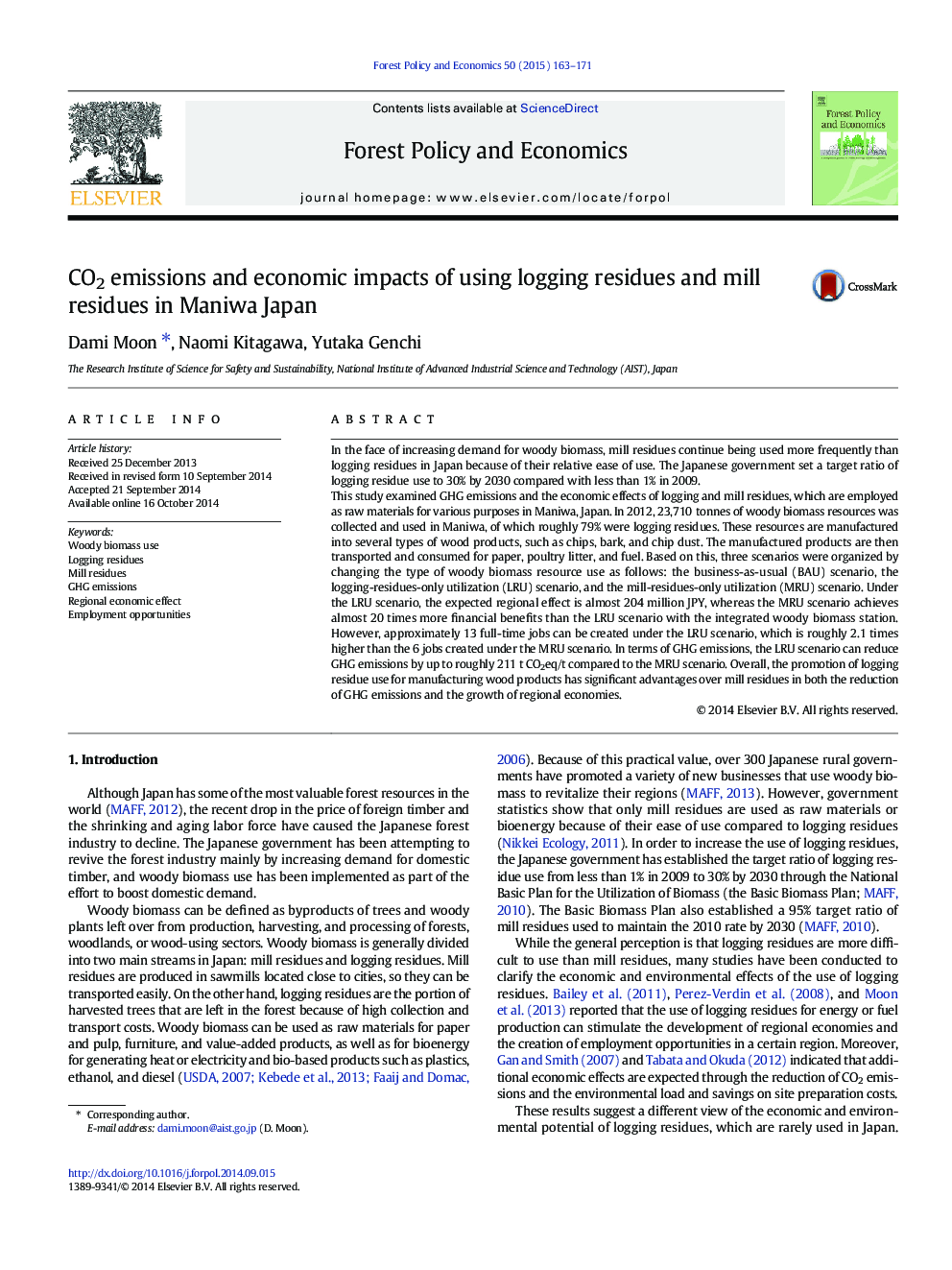| Article ID | Journal | Published Year | Pages | File Type |
|---|---|---|---|---|
| 6544940 | Forest Policy and Economics | 2015 | 9 Pages |
Abstract
This study examined GHG emissions and the economic effects of logging and mill residues, which are employed as raw materials for various purposes in Maniwa, Japan. In 2012, 23,710Â tonnes of woody biomass resources was collected and used in Maniwa, of which roughly 79% were logging residues. These resources are manufactured into several types of wood products, such as chips, bark, and chip dust. The manufactured products are then transported and consumed for paper, poultry litter, and fuel. Based on this, three scenarios were organized by changing the type of woody biomass resource use as follows: the business-as-usual (BAU) scenario, the logging-residues-only utilization (LRU) scenario, and the mill-residues-only utilization (MRU) scenario. Under the LRU scenario, the expected regional effect is almost 204 million JPY, whereas the MRU scenario achieves almost 20 times more financial benefits than the LRU scenario with the integrated woody biomass station. However, approximately 13 full-time jobs can be created under the LRU scenario, which is roughly 2.1 times higher than the 6 jobs created under the MRU scenario. In terms of GHG emissions, the LRU scenario can reduce GHG emissions by up to roughly 211Â t CO2eq/t compared to the MRU scenario. Overall, the promotion of logging residue use for manufacturing wood products has significant advantages over mill residues in both the reduction of GHG emissions and the growth of regional economies.
Related Topics
Life Sciences
Agricultural and Biological Sciences
Forestry
Authors
Dami Moon, Naomi Kitagawa, Yutaka Genchi,
